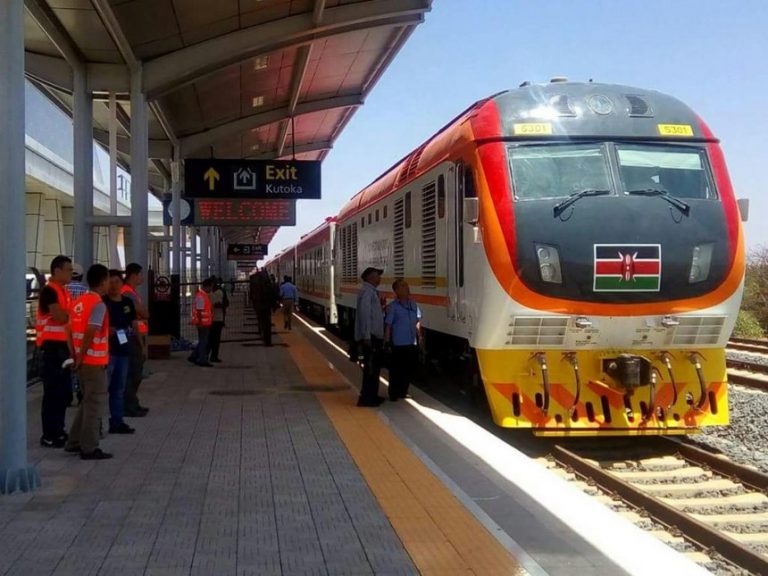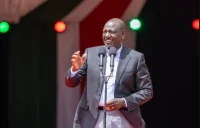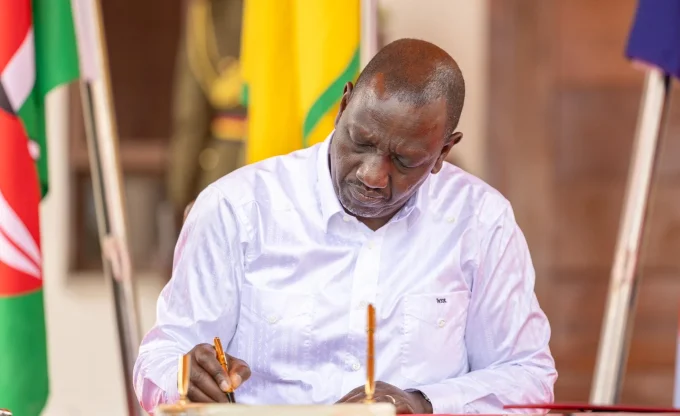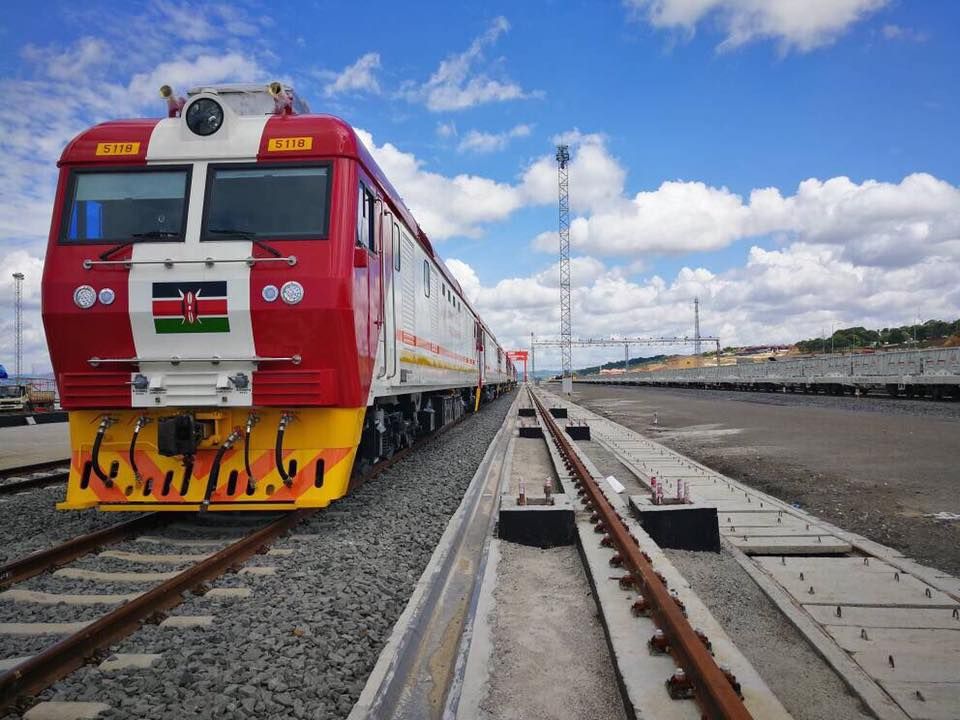The long awaited standard gauge railway (SGR) in finally here! It has, understandably, caused mixed feelings and attracted different reactions among Kenyans and political leaders.
The passenger coach has been named ‘Madaraka Express (ME), and was unveiled just a day before the country marked this years Madaraka Day, which marks the day Kenya got internal self-rule from colonial government.
The intercity train will operate between Nairobi and Mombasa while the county one will make stops at the intermediate stations of Mariakani, Maisenyi, Voi, Mtito Andei, Kibwezi, Emali and Athi River. A cargo wagon was also launched, but did not elicit excitement as such.
The fare charges for the economy class are much cheaper on Madaraka Express than the use of road transport, whilst the VIP charges are more expensive than the bus service to and fro Nairobi and Mombasa. The passenger train services between Nairobi and Mombasa will cost Ksh700 for economy class and Ksh3,000 for first class.
Buses on the route charge about Ksh1,000 for economy, Ksh1,800 for VIP, and Ksh2,300 for business class.
SEE ALSO: The little known company that cemented the SGR
Below are some interesting facts you may have forgotten about the whole SGR project:
- The whole project cost around Ksh327 billion to complete, although issues were raised about inflation of costs by people in government and State House.
- The SGR activities will not be managed by Kenyan government for the next 10 years. It will be run by China Communications Construction Company, the mother company to China Road and Bridge Corporation, which constructed the railway line. After that it will then hand over the operations to GoK.
- The plan to build the SGR was put on paper by the Kibaki administration in 2009. The governments of Kenya and Uganda then signed a memorandum of understanding (MoU) in October 2009 to construct the SGR from Mombasa to Kampala. A tripartite agreement was signed by the governments of Kenya, Uganda and Rwanda in August 2013 to fast-track the development of the railway to their respective capital cities. However, it was implemented by President Uhuru’s government.
- Kenyan government paid only 10% of the cost to construct the SGR. China Exim Bank provided 90% of the financing through loan to the Kenyan government. Which means the taxpayer still owes the Chinese even as they excitedly enjoy the services and sight of SGR.
- All the stewards and train/locomotive drivers currently are women. The train that will carried President Kenyatta and his deputy William Ruto from Mombasa to Nairobi, driven by two females, marking the historical launch.
- The construction of the railway line saw at least 40,000 people get employed. However, most of them have been rendered jobless after completion of phase one of the SGR project.
- The line will initially carry diesel trains while electrification is possible in future. Multiple unit passenger trains having a capacity of 960 passengers will travel at an average speed of 120km/h on the line.
- Despite the launch, the cargo train will not be of use to the public until the end of 2017 when it will be open for the public. Freight trains will have a capacity of 216 Twenty-foot Equivalent Units (TEUs) and travel at an average speed of 80km/h. A typical freight train on the line will consist of 54 double stack flat wagons and measure 880m-long. China will supply the initial rolling stock comprising 56 diesel locomotives, 1,620 wagons and 40 coaches.
- The single-track standard gauge railway between Mombasa and Nairobi will have a route length of 472km and a total length of 609km. It will run through the counties of Mombasa, Kilifi, Kwale, Taita-Taveta, Makueni, Kajiado, Machakos and Nairobi.
- The launch of the new railway line will not kill operations of the traditional line. The new line will run parallel to the existing meter gauge railway and the Mombasa-Nairobi Road or A109 Highway for the most part. It will deviate at certain points to attain the desired gradient and curvature.
- The Mombasa-Nairobi SGR is the biggest infrastructure project in Kenya since independence.
[crp]












![he previous administration led by former President Uhuru Kenyatta, pictured here with Xi Jinping, cited confidentiality clauses in the agreement, and the possible injuring of relations with China. [Photo/ CGTN]](https://businesstoday.co.ke/wp-content/uploads/2022/11/UK-1.png)
Leave a comment